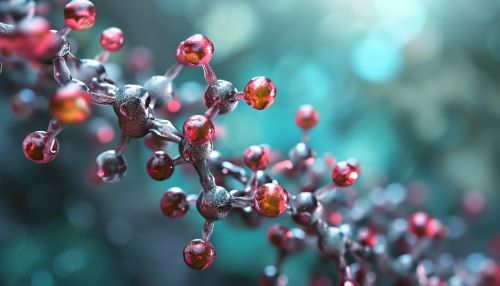Interleukin 4
Overview
Interleukin 4 (IL-4) is a cytokine that plays a crucial role in regulating immune response. It is produced by several cell types, including T cells, mast cells, and eosinophils. IL-4 is a key player in the differentiation of naive helper T cells (Th0 cells) into Th2 cells. Once produced, IL-4 can bind to the IL-4 receptor (IL-4R), which is expressed on various cell types, triggering a cascade of intracellular signals that ultimately influence cell behavior.


Structure and Function
IL-4 is a small protein molecule composed of four alpha-helical bundles. It has two distinct binding sites, one for the IL-4Rα chain and another for the γc chain. The binding of IL-4 to its receptor triggers the activation of the Janus Kinase (JAK)/Signal Transducer and Activator of Transcription (STAT) pathway, which results in the transcription of specific genes that influence cell behavior.
The primary function of IL-4 is to promote the differentiation of naive helper T cells into Th2 cells. Th2 cells are responsible for coordinating the immune response against extracellular pathogens, such as parasites. IL-4 also promotes the production of IgE antibodies by B cells, which play a critical role in the immune response against parasitic infections and are also involved in allergic reactions.
Role in Immune Response
IL-4 plays a pivotal role in the immune response by influencing the behavior of various immune cells. The primary target of IL-4 is the naive helper T cell. Upon activation by an antigen, these cells can differentiate into several types of effector T cells, including Th1, Th2, Th17, and regulatory T cells (Tregs). The differentiation pathway is influenced by the local cytokine environment. In the presence of IL-4, naive helper T cells are more likely to differentiate into Th2 cells.
Th2 cells play a critical role in the immune response against extracellular pathogens, such as parasites. They achieve this by producing a range of cytokines, including IL-4, IL-5, IL-9, IL-10, and IL-13, which coordinate the immune response. IL-4, in particular, promotes the activation and proliferation of eosinophils, a type of white blood cell that is highly effective at killing parasites.
In addition to its role in parasitic infections, IL-4 is also involved in the immune response against certain types of bacteria and viruses. For example, IL-4 has been shown to enhance the production of IgA antibodies, which are important for neutralizing pathogens in the mucosal tissues.
Role in Allergic Reactions
IL-4 is also involved in the pathogenesis of allergic reactions. It promotes the production of IgE antibodies by B cells. These antibodies bind to allergens and trigger the release of histamine from mast cells, leading to the symptoms of an allergic reaction.
In addition to promoting IgE production, IL-4 also enhances the survival and activation of mast cells, which are key players in the allergic response. Furthermore, IL-4 can induce the expression of adhesion molecules on endothelial cells, promoting the recruitment of inflammatory cells to the site of an allergic reaction.
Clinical Significance
Given its central role in the immune response and allergic reactions, IL-4 has been implicated in a variety of diseases, including asthma, allergic rhinitis, atopic dermatitis, and certain autoimmune diseases. As such, strategies to inhibit IL-4 activity are being explored as potential treatments for these conditions.
For example, dupilumab is a monoclonal antibody that blocks the IL-4 receptor, preventing IL-4 from binding and exerting its effects. Dupilumab has been approved by the FDA for the treatment of moderate-to-severe atopic dermatitis and asthma.
